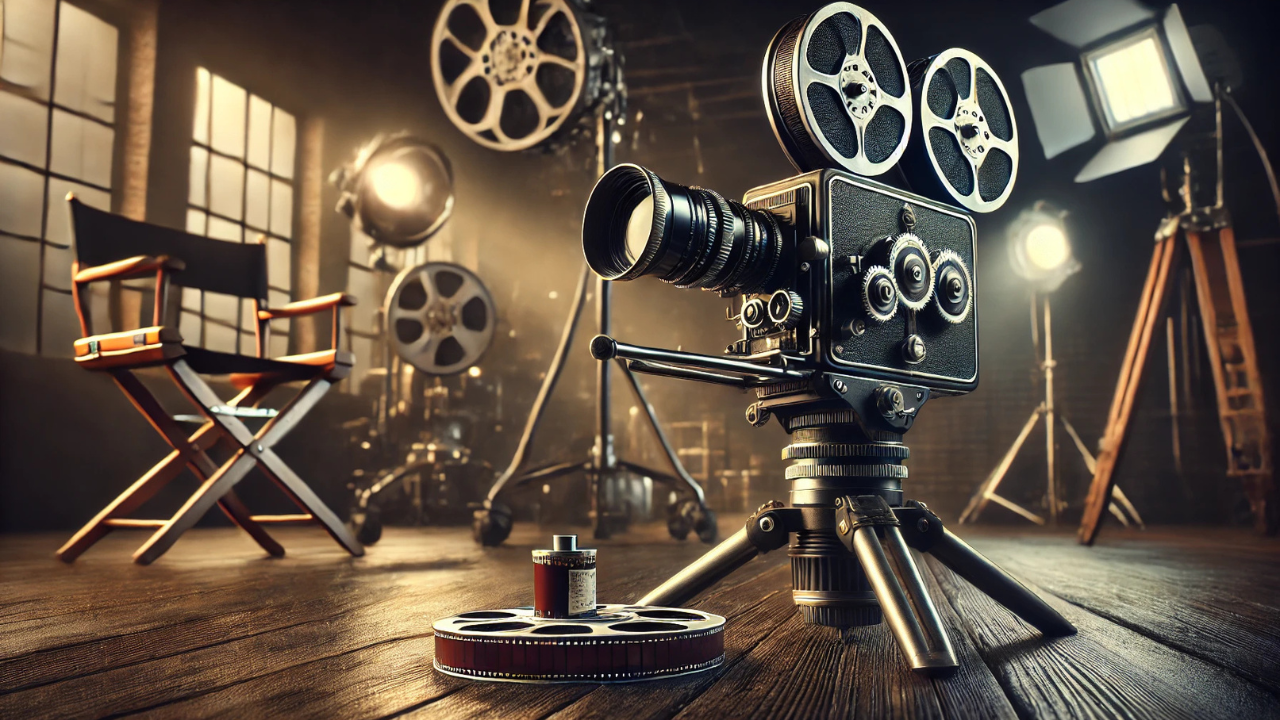In filmmaking, the “Film Makinesi” (film camera) is more than just a tool—it’s a bridge that connects the rich history of traditional cinema with the ever-evolving landscape of modern filmmaking. Over the years, the film camera has undergone significant transformations, adapting to technological advances while preserving the essence of capturing moments on celluloid. This article explores the role of the film makinesi in modern cinema, how it merges tradition with innovation, and why it remains relevant in an era dominated by digital technologies.
The Role of Film Makinesi in Cinema History
Before the digital age, the film makinesi was the primary tool for capturing motion pictures. The first film cameras, dating back to the late 19th century, used photographic film to record images, which were later projected onto a screen to create the illusion of movement. Early filmmakers like Georges Méliès and the Lumière Brothers relied on film cameras to make some of the first cinematic experiences, which remain iconic today.
The traditional film makinesi, often called an analogue or mechanical camera, uses strips of photographic film to capture images through a chemical process. This physical medium became synonymous with cinema for nearly a century. Iconic films such as Gone with the Wind (1939), Citizen Kane (1941), and Pulp Fiction (1994) were all shot on film, using complex film cameras that allowed directors and cinematographers to compose images with incredible depth and clarity.
The Shift to Digital Filmmaking
By the early 21st century, digital technology began to revolutionize the world of filmmaking. Digital cameras, with their ability to record video without physical film, offered numerous advantages, including reduced costs, faster workflows, and immediate playback of shots. The rise of digital filmmaking ushered in a new era, with filmmakers embracing the versatility and convenience of digital cameras.
However, despite the widespread adoption of digital filmmaking, many filmmakers and cinematographers still swear by the aesthetic qualities of the film camera. The film has a unique texture and depth that digital cameras sometimes struggle to replicate. The grainy, organic feel of film stock, along with its ability to capture subtle details in shadows and highlights, remains beloved by certain filmmakers who want to evoke a particular look or feel in their projects.
Film Makinesi in the Digital Age: A Bridge Between the Past and Present
In today’s cinematic landscape, the film makinesi has evolved, blending traditional techniques and cutting-edge technologies. While digital filmmaking has undoubtedly taken over the mainstream, film cameras have remained. Instead, they have become a niche tool used by filmmakers who seek to harness the unique characteristics of the analogue film while incorporating modern advancements.
Many directors, such as Quentin Tarantino and Christopher Nolan, have famously chosen to shoot their films on film, often using traditional film cameras like the ARRI 435 or the Panavision Panaflex. They argue that the aesthetic qualities of cinema—its texture, colour, and richness—cannot be perfectly replicated by digital cameras. For these filmmakers, the machines offer an unmatched quality that enhances the cinematic experience and maintains a connection to the golden age of filmmaking.
Innovations in Film Makinesi: Bringing New Life to Traditional Equipment
While the basic mechanics of the film camera remain rooted in tradition, advancements in technology have allowed for innovations. Today’s film cameras incorporate digital sensors, advanced lenses, and precise motor controls that enhance their capabilities. Filmmakers can now capture images on 35mm or 70mm film stock, using the latest equipment to achieve extraordinary visual effects.
One such advancement is the ability to shoot films in IMAX format using film cameras. IMAX, a cinematic format that provides unparalleled detail and clarity, has primarily been associated with digital cameras. However, the combination of IMAX and film makes for a visually stunning experience, as seen in films like Dunkirk (2017) and Interstellar (2014), both of which were shot in 70mm. These films showcase the power of the film camera in creating epic, immersive visuals that still maintain the distinctive characteristics of traditional filmmaking.
Another key innovation is the hybrid use of digital and film technologies. Many modern filmmakers combine digital and analogue equipment to achieve the best of both worlds. For example, the digital camera may be used for its flexibility and speed, while the film camera is employed for its unique visual qualities. This hybrid approach allows filmmakers to blend the strengths of both mediums, creating a timeless and contemporary look.
The Appeal of Film Makinesi: Why Filmmakers Still Choose Film
Despite the digital revolution, there are several reasons why the film makinesi remains a popular choice for many filmmakers. Some of the key factors include:
- Aesthetic Appeal: As mentioned earlier, the film has a distinctive look that digital cameras often struggle to replicate. Film stock’s texture, grain, and colour saturation add depth and richness to the images, providing a timeless and cinematic quality.
- Tangible Process: Shooting on film requires a more deliberate, thoughtful approach. Filmmakers must carefully plan each shot and conserve film stock, as each roll of film is a limited resource. This discipline often leads to more intentional and creative decision-making during production.
- Nostalgia and Tradition: For many filmmakers, using a film camera is a way to pay homage to the great cinematic works of the past. The tactile experience of handling a film camera, loading the film stock, and listening to the sound of the camera running evokes a sense of nostalgia for the golden age of cinema.
- Collaboration with the Crew: Working with film cameras often involves greater cooperation between the director, cinematographer, and crew. Film cameras’ physicality and the need for careful processing and development create a more hands-on and collaborative filmmaking process.
- Longevity and Archival Value: While digital files are susceptible to obsolescence as technology advances, film prints have a longer lifespan. Properly stored film can last for decades, making it a reliable medium for archiving and preserving cinematic history.
Film Makinesi in the Future: Where Tradition Meets Innovation
The film makinesi will likely continue to evolve as filmmakers explore new ways to blend traditional methods with cutting-edge technology. While digital cameras will remain dominant in many filmmaking sectors, the film camera will maintain a cherished place in the hearts of those who value its unique aesthetic qualities.
We may see even more hybrid technologies, where the boundaries between digital and analogue filmmaking become increasingly blurred. For example, filmmakers may experiment with new film stocks, digital sensors, and post-production techniques that bring out the best of both worlds. The result could be a new era of filmmaking where the film camera is no longer seen as a relic of the past but as a powerful tool that continues to inspire and shape the future of cinema.
Conclusion
The film makinesi has proven to be more than just a tool for capturing images—it is a symbol of the evolution of cinema itself. From the early days of silent films to the digital revolution of the 21st century, the film camera has adapted, evolved, and remained relevant. Today, it bridges tradition and innovation, offering filmmakers the best of both worlds. Whether it’s the aesthetic appeal of film or the precision of modern technology, the film makinesi continues to play a vital role in shaping the stories that captivate audiences around the globe.
FAQs
- Why do some filmmakers still prefer using film makinesi over digital cameras? Filmmakers prefer using a film camera because of its unique aesthetic qualities, such as texture, colour depth, and grain. The film also offers a nostalgic and hands-on approach to filmmaking, providing a more intentional and creative process.
- What are the key differences between film and digital cameras? Film cameras capture images on photographic film, creating a tangible, physical medium with a distinctive look, while digital cameras record images as digital data. Digital cameras are more cost-effective and offer immediate playback, whereas film cameras require more time and resources but provide a more organic and cinematic result.
- Are film cameras still used in big-budget Hollywood films? Many directors still use film cameras for big-budget films, particularly those seeking a timeless, cinematic look. Directors like Quentin Tarantino and Christopher Nolan continue to use film to achieve a particular visual style that digital cameras cannot fully replicate.
- How has the film makinesi evolved? Over the years, the film camera has evolved with technological advancements. Modern film cameras often incorporate digital sensors, advanced lenses, and precise motor controls, allowing for new capabilities while preserving the analogue aesthetic.
- Can filmmakers combine digital and film cameras in the same production? Many filmmakers use a hybrid approach, combining digital and film cameras to achieve the best of both worlds. Digital cameras offer flexibility, while film cameras provide a unique visual texture that enhances the cinematic experience.




